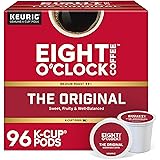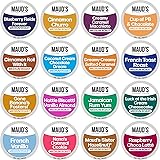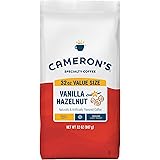Decoding the Differences: Flat White vs. Latte vs. Cappuccino
For any coffee enthusiast or aspiring barista, distinguishing between a flat white, a latte, and a cappuccino can sometimes feel like navigating a complex maze of milk and espresso. These three popular milk coffees are often confused, yet each offers a distinct sensory experience. While they all start with the same core ingredients – espresso and steamed milk – their preparation, especially the technique for milk texturing, creates unique profiles that cater to different preferences. Fortunately, understanding these nuances is simpler than you might think.
The key to unlocking these differences, as expertly demonstrated in the video above, lies predominantly in how the milk is steamed and frothed, along with the precise coffee-to-milk ratio. Mastering the art of milk texturing transforms ordinary ingredients into extraordinary coffee beverages, ensuring each sip delivers the intended aroma, taste, and mouthfeel. Let’s dive deeper into the specific characteristics that set these beloved coffee drinks apart, helping you craft or order your perfect cup every time.
Beyond the Brew: Understanding Your Cup & Coffee Ratio
Before even considering the milk, the foundation of any great milk coffee begins with the right cup size and a carefully calibrated coffee-to-milk ratio. The vessel you choose isn’t merely for aesthetics; it plays a crucial role in how the coffee’s flavors are perceived. A smaller cup concentrates the coffee’s intensity, while a larger one allows for more milk, leading to a softer, more diluted profile. This initial choice sets the stage for the entire drinking experience.
Typically, a flat white and a cappuccino are served in smaller cups, often around 190ml (approximately 6-7 ounces), which helps maintain the coffee’s robustness against the milk. In contrast, a latte commonly finds its home in a larger cup or glass, often around 220ml (approximately 7-8 ounces), accommodating a greater volume of milk. This increased milk content in a latte contributes to its characteristically milder flavor, creating a creamy beverage that gracefully balances the espresso’s boldness with a gentle, milky sweetness. For those who prefer a stronger coffee experience, a single shot can be upgraded to a double, or even a double ristretto, to punch through the larger volume of milk, especially in takeaway cups or larger servings.
While a single espresso shot traditionally forms the base for these drinks in standard cup sizes, the choice of shot can dramatically alter the final flavor profile. A ristretto, a shorter, more concentrated espresso shot, offers a sweeter, less bitter taste, ideal for cutting through larger milk volumes without overwhelming the drink. Conversely, a standard double shot provides a robust, classic espresso flavor that can stand up to generous amounts of milk. Ultimately, selecting the correct espresso dose and cup size is a personal journey, influenced by the coffee beans being used and the desired intensity of the final milk coffee.
The Heart of the Difference: Mastering Milk Texture
The true artistry in crafting a flat white, latte, or cappuccino lies within the microfoam – the velvety, expertly steamed milk that becomes one with the espresso. Microfoam isn’t just about bubbles; it’s about creating a silky, consistent texture without large pockets of air, a process demanding precision and a keen ear. The aim is to introduce just enough air (the “stretching” phase) to achieve the desired froth level, then to integrate that air evenly throughout the milk (the “texturing” phase) until it becomes a creamy, pourable liquid.
This process is akin to a culinary alchemy, transforming cold milk into a sweet, warm elixir. The amount of air incorporated dictates the final thickness of the foam and, consequently, the mouthfeel of the coffee drink. Overheating the milk can ruin its delicate sweetness and texture, resulting in a thin, watery consistency or burnt taste. Hence, consistent temperature control and a practiced hand are paramount to achieving that perfect, glossy microfoam that seamlessly blends with the espresso, creating an unparalleled drinking experience.
The Flat White: Subtle Sophistication (Approx. 5mm Froth)
The flat white, often lauded for its robust coffee flavor and velvety texture, demands minimal aeration of the milk. The barista introduces air for only a brief period, typically 1 to 2 seconds, aiming for a very thin layer of fine microfoam. This limited aeration creates a milk texture that is remarkably integrated with the espresso, resulting in a balanced, coffee-forward milk coffee. Think of it as a perfectly tailored suit—sleek, understated, and impeccably fitted to highlight the rich espresso beneath.
With approximately 5 millimeters of froth, the flat white offers a smoother, more intense coffee experience, allowing the espresso’s nuances to shine through. Despite its “flat” name, a well-made flat white still possesses enough stable microfoam to support intricate latte art, demonstrating the barista’s skill in creating a thin, yet durable, top layer. This characteristic mouthfeel is often described as velvety and full-bodied, making it a favorite among those who appreciate the strength of espresso complemented by a gentle creaminess.
The Latte: Creamy Comfort (Approx. 10mm Froth)
Moving from the subtle to the soothing, the latte embraces a slightly more generous amount of aerated milk. The steaming process for a latte involves incorporating air for a duration of 3 to 4 seconds, resulting in a thicker layer of microfoam compared to a flat white. This additional aeration contributes to the latte’s signature creamy texture, offering a comforting and approachable coffee experience. It’s like wrapping yourself in a warm, inviting blanket, soft and enveloping.
Featuring around 10 millimeters of froth, the latte presents a softer mouthfeel that coats the palate with its milky richness. The increased milk volume and thicker foam mellow the espresso’s intensity, making it a popular choice for those who prefer a less assertive coffee flavor. While still capable of showcasing latte art, the foam on a latte tends to be more substantial, providing a delightful contrast to the liquid espresso below. This balance of creamy texture and gentle coffee notes is why lattes remain a steadfast favorite across the globe.
The Cappuccino: Classic Cloud-like Indulgence (Approx. 15mm Froth)
Finally, the cappuccino stands as the epitome of frothy indulgence, characterized by its generous, airy foam. To achieve this cloud-like texture, the milk is aerated for a longer period, typically 5 to 6 seconds, leading to a substantial volume increase. This extended air incorporation creates a distinct layer of light, airy foam, giving the cappuccino its iconic appearance and a unique stratified mouthfeel. Imagine a fluffy cloud protecting a rich coffee landscape beneath.
With approximately 15 millimeters of froth, the cappuccino offers a delightful interplay of textures—the liquid espresso at the bottom, followed by a layer of warm milk, topped with a thick, ethereal foam. This prominent foam layer creates a distinctive sensation, where sips deliver a mix of airiness and coffee warmth. Often finished with a dusting of chocolate in many regions, particularly in Australia, the cappuccino provides a luxurious and spirited coffee experience that engages multiple senses.
Why These Differences Matter: The Sensory Experience
The seemingly small variations in froth levels and milk content translate into vastly different sensory experiences, which is precisely why these three milk coffees have carved out their own niches in the hearts of coffee lovers. The thickness of the microfoam directly impacts how the coffee feels in your mouth, known as mouthfeel. A flat white offers a dense, silky embrace, allowing the espresso’s boldness to dominate. In contrast, a latte provides a broader, creamier coating, softening the coffee’s edges. The cappuccino, with its airy crown, delivers a playful, textured sip that combines lightness with warmth.
Understanding these distinctions empowers both consumers and baristas. For customers, it means confidently ordering the coffee drink that best suits their mood and preference, whether it’s a strong, velvety flat white or a comforting, frothy cappuccino. For baristas, this knowledge is fundamental to consistency and customer satisfaction, allowing them to communicate effectively about their craft and deliver precisely the experience requested. In fact, these three milk coffees account for roughly 80% of the volume in many modern cafes, underscoring their importance in the daily coffee landscape.
Beyond the Basics: Tips for Perfecting Your Pour
Achieving the perfect milk texturing for a flat white, latte, or cappuccino is a skill honed with practice, precision, and an understanding of your equipment. Beyond simply steaming, the technique of pouring the milk into the espresso is equally vital for flavor integration and latte art. A smooth, controlled pour ensures the microfoam blends seamlessly with the espresso, creating a harmonious beverage rather than separate layers.
Always start with fresh, cold milk of good quality, as this significantly impacts the texture and sweetness of your microfoam. Maintain a clean steam wand, as residual milk can affect both hygiene and subsequent steaming results. Remember, the journey from novice to expert barista is one of continuous learning and refinement, and mastering these three essential milk coffees is a significant step. Experiment with different beans, milk types, and techniques to discover your personal preferences and elevate your coffee preparation skills. Whether you’re crafting a bold flat white, a soothing latte, or a classic cappuccino, the pursuit of perfection is a rewarding one.







